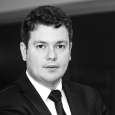Monsson has been present in Romania since 2014, as one of the biggest developers of wind parks with over 2,500 MWh installed. The company has also developed the world’s largest wind park outside the United States, located in Cogeleac, Romania with an installed capacity of 600 MWh.
Can you briefly introduce our readers to Monsson and the company’s rapid evolution in the renewable energy sector?
The company was born in Sweden, but grew into the strong player it is today through its work in Romania. This is well reflected in our workforce set up - approximately 90% of our employees, including those in international offices, are Romanian. When it comes to our activity, it is worth mentioning that 30% of all active wind parks in Romania have been developed by us, and as part of our strategy we have kept a 10% stake in all the projects we developed.
About five years ago, when legislation was no longer attractive in Romania, we saw ourselves in a situation where the options were to either close shop or expand. We decided for the latter option, and at present we have offices in 20 countries around the world, successfully covering Europe, South Africa, Australia and New Zealand. Often times we acted as a trend-setter in the local and European industry, and we are proud that we were able to turn Monsson, a company with strong Romanian capital, into an internationally recognized brand.
You have become highly involved in training new specialists for the renewable sector, a much needed resource in Romania. Can you tell us more about your initiatives in this field?
We initially captured know-how from abroad, and participated ourselves in many training courses to develop the necessary expertize. We have come a long way since, for example we have created the largest training center in South Eastern Europe for renewable energy specialists. We are preparing more than 2,000 people for this sector, be it from Romania or neighboring countries like Serbia, Croatia, Russia and so on. We have basically turned ourselves into net exporters of renewable energy know how.
We want to replicate this success through a training center in Petrosani. Renewable energy will continue to grow around the world, and so will the need for specialists in operation, maintenance and service. The work tends to be project based, in various locations around the world so our idea is to prepare as many people as possible here in Romania, and provide them with opportunities to work either home or abroad.
How difficult are you finding this process of professional conversion?
The process came to us easily because we are generally talking about people with an engineering background or with technical inclinations. In about six months it is possible to become a junior in the field, and continue to develop expertize from there. Wind power is also closely linked to other types of energy, with significant common ground such as hydraulics, mechanics or the electric aspects. What is needed on top of these is only some particular knowledge about the renewables sector, for example the specific risks associated with it.
As the transition to green energy continues to unfold in Romania, what would you say are the main challenges to be overcome?
The main problem I see is settling on the appropriate legislation. I believe that if PPAs become a reality, if the conditions for connecting new producers to the national network improve, and generally if there is a common strategy between stakeholders, then Romania can easily install another 3,000 MWh. The perspectives are positive, though not much will change until 2021 because we need to obtain new authorizations for the parks, since many of them have expired. There is an advantage to these delays though, because Romania will benefit from the latest technologies. Starting with 2021 Romania will install only 5MWh turbines, a great advantage because these turbines are much more efficient and can reach grid parity without a public support scheme.
An important aspect is for investors, distributors and transporters to align their vision. We need a common plan to strengthen the national network, so that we can install renewable capacities quickly and at reasonable costs. At present, the majority of distribution operators in Romania have invested in renewable energy, so they have a direct interest in the matter. Similarly, Transelectrica wants to have a stable system and this can be achieved for example by using modern equipment to connect to the network.
What can we expect from Monsson in the coming two-three years regarding international expansion?
Neighboring countries have been very interesting for us so far but their markets have evolved in a similar way to Romania, namely with many ups and downs. At present we are keeping an eye on Croatia, Serbia, Kazakhstan, Russia, Georgia and Republic of Moldova, because we expect them to evolve rapidly in the coming two-three years. Mature markets tend to pose higher expectations and lower gains, and a level of know-how about the specifics of the market. By contrast, new markets can be moulded, and newcomers can adapt easier because the rules are not as strict.






